#ume wa saitaka
Text
What’s In a Dance? Part 14
On The Eight Day Of Fun I present... another returning feature! It’s baaaaack! I got a few requests for new songs past few months, so I chose one that’s very fitting right now with the new year upon us. However things are not always what they seem.
Ume Wa Saitaka (梅は咲いたか) - Did The Plum Blossoms Bloom?

Image courtesy of Girasolemurano on Instagram.
This song is really beautiful, but there’s one glaring issue: there are two different versions performed in the karyukai. Sometimes they can be divided by kagai, but the reasons for such a divide aren’t clear
Lyrics
Ume wa saitaka, sakura wa madakaina, yanai nayonayo kaze shidai,
梅は咲いたか, 桜はまだかいな, 柳なよなよ風次第,
Did the plum blossoms bloom? Are the cherry blossoms still there? The willow bends depending on the wind,
Yamabuki ya uwaki te, iro bakkari, shongai na,
山吹や浮気で, 色ばっかり, しょんがいな,
The fickle mountain rose is only its color, shon gai na,
Ume ni shō ka, sakura ni shiyo kaina, iro wa midori no matsu ga eda ni,
梅にしようか, 桜にしよかいな, 色は緑の松が枝に,
The color, there on the verdant pine, will it be plum blossom or cherry?
Ume to sakura wo sakasetai shongai na,
梅と桜を咲かせたいしょんがいな,
I want to make the plum and cherry blossoms bloom, shon gai na,
Kinō kitakaze, kyō wa minamikaze, ashita wa ukina no tatsumikaze,
昨日北風, 今日は南風, 明日は浮名のたつみ(巽)風,
Yesterday, the north wind, today, the south wind, tomorrow, it is rumored to be the southeast wind,
Koi no kaze nara, irobakkari shongai,
恋の風なら, 色ばっかりしょんがい,
If love is in the air, it is only color, shon gai,
Yanagibashi kara kobune de kyū gase, fune wa yurayura nami shidai,
柳橋から小舟で急がせ, 舟はゆらゆら波次第,
From Yanagibashi I rush in my small boat, carried by the waves,
Fune kara agatte dote Yachō, Yoshiwara e goannai,
舟から上がって土手八町, 吉原へご案内,
From the ship we go up to the embankment of Yachō as we enter Yoshiwara,
Sakura sakura to ukareteiru waina, yayoi sangetsu hanamigetsu,
桜さくらと浮かれているわいな, 弥生三月花見月,
Many cherry blossoms float along, the third month that heralds spring and the fourth month of flower viewing,
Anata wa hana yori, sake bakkari shongai na,
あなたは花より, 酒ばっかりしょんがいな,
My love for you is more than those of the flowers, yet I am already drunk, shon gai na,
Asari toretaka hamaguri madakaina awabi kuyokuyo kata omoi,
浅蜊取れたか蛤まだかいな鮑くよくよ片想い,
Have the steamer clam been harvested? Are there still sushi clams? The abalone broods over unrequited love,
Sazae wa rinki de, tsuno bakkari shongai na,
栄螺は悋気で, 角ばっかりしょんがいな,
The turban shell is no more than the horns of jealousy, shon gai na,
Ginza hatchō ikō janai kai na, yama no kitsune ga shibake te,
銀座八丁行こうじゃないかいな, 山の狐が七化けて,
Let’s go to Ginza and see the mountain foxes change clothes quickly like the stage actors,
Kuroi mayu hiku, sode wo hiku shongai na,
黒い眉引く, 袖を引くしょんがいな,
Drawing black eyebrows, drawing down their sleeves, shon gai na,
Koi no Asakusa futari de iko kanai, nani wo Kototoi miyakodori,
恋の浅草二人で行こかいな, 何を言問都鳥,
Shall we go to beloved Asakusa, like the miyakodori of Kototoi,
Sue wa chidori de Namida Bashi shongai na.
末は千鳥で泪橋しょんがいな.
Or, in the end, will it be the plovers of Namida Bashi? Shon gai na.
The Breakdown
First off, you may have noticed that a good chunk of the lyrics were italicized; this is because each kagai tends to pick and choose which of those verses it adds on, so you won’t find a single version with all of the lines. The regular verses are the mandatory ones and the italicized verses are the optional ones. You may have also seen the addition on the end of many verses of “shon gai na,” which is kinda like our good friend “yoi yoi yasa” as in it’s there to add that bit of emphasis and rhythm. This is actually an old bit of colloquialism as it was almost like a type of slang when the song was written over 100 years ago. In its simplest terms, it’s an archaic way of saying “sou desu ka,” which means “is that so?”
The four types of plants elude to four different types of women in the karyukai. The plum blossoms refer to the young geiko as plum blossoms are the first to bloom in the spring. The cherry blossoms, on the other hand, represent more mature geiko who wait longer than the plum blossoms to bloom. Willows represent women who change to meet their various situations, but that makes them inconsistent and fickle. Mountain roses are a bit more nefarious as they represent women who are unfaithful and lie. Their yellow color is a symbol of frivolity when it comes to money, which usually then leads to heartbreak. Next, we're asked to wonder what color will bloom on the pine branch. The pine in this case is representing longevity and strength, and most likely a male customer, so they wonder whether a young geiko or a mature geiko will begin a relationship with them.
That being said, from reading the rest of the lyrics you may have been able to tell that this song predominately takes place in Tokyo and not Kyoto. Each of the places it mentions are popular spots in and around Tokyo. To begin, the term “tatsumi” is a play on words that actually represents the Tatsumi Geisha (辰巳芸者) who were found in the Fukugawa district. Next we’re lead around the city, from the famous Yanagibashi, which was once the most prestigious district in Tokyo, to Yachō, another district, and onto Yoshiwara by means of a small boat. The way that the narrator talks about Yoshiwara lets us know that they have a certain fondness for the area and are more of a connoisseur than a casual visitor. They make merry during March and April, the third and fourth months respectively, although when this was written it would have referred to the third and fourth months in the traditional Asian calendar. The narrator remarks about how their enjoyment is fleeting, just like the floating world in which they spend their time.
The inclusion of marine invertebrates seems really random, but it all serves a singular purpose. By harvesting the animals in turn you actually follow a cyclical calendar that takes you through an entire year. Being more specific, the steamer clams and sushi clams are both used for Kai Awase (貝合わせ), which is a shell matching game. Abalone and turban shells does not have a partner, so they stand alone and are looking for love. The turban shell may also elude to Tsunokakushi (角隠し), which are traditional head covers worn by brides to hide their “horns.”
Finally, we continue our trek around Tokyo, first by visiting Ginza to see fox spirits, also known as kitsune, transform like kabuki actors and even witness how their makeup runs down their cheeks and onto the sleeves of their kimono as they try to hide their sadness. From there, we go to Asakusa and then Kototoi, which is another name for Mukojima. Miyakodori, not to be confused with Miyako Odori, are a type of seagull that usually represent winter. Plovers, on the other hand, represent summer, so the narrator is once again talking about time flowing. In the end, they end up at Namida Bashi, which actually means “Bridge of Tears” and likely refers to the floating bridge of dreams in The Tale of Genji. The narrator is quite melancholy yet content as they reflect on their relationships.
Each Kagai’s Version
Gion Kobu (祇園甲部) Version - Inoue School (井上流)
Sorry Inoue fans, but I can’t find their version being danced.
Pontocho (先斗町) Version - Onoe School (尾上流)
Same issue here Onoe fans!
Kamishichiken (上七軒) Version - Hanayagi School (花柳流)
Even Hanayagi is left out!? Yep.
Miyagawa Cho (宮川町) Version - Wakayagi School (若柳流)
Finally, some actual performances! Right from the start this dance is full of quick movements that only slow when speaking about the contemplation between the flowers. It uses a mai ōgi almost as much as it does hand movements, so it’s a feast for the eyes throughout its short duration. This version is performed by Kosen (小扇) of Kaden (花傳).
Gion Higashi (祇園東) Version - Fujima School (藤間流)
Compared to the Wakayagi version, the Fujima one seems a bit slower in pace for the song, but it still has a fair amount of movement compared to other Fujima dances. Some of the frozen kata poses are downright gorgeous and I feel that they really add to the dance. A mai ōgi is also used, but it’s present in the hand of the dancer for the entire duration of the dance, minus a few seconds. This version is performed by Tomitsuyu (富津愈) of Tomikiku (富菊).
__________________________________________________________________
The lyrics provided were translated by myself with the help of a friend and gathered from multiple sources; I began with multiple sets, such as those from here, here, here, and here, and figured out which made the most sense when written out as some versions just wrote the hiragana versions of a few kanji and it made the meanings a bit more ambiguous to people who are not fluent in Japanese. In the original version some older forms of common kanji were used so I updated them as this may also confuse people.
#maiko#geiko#geisha#kyoto#dance#ume wa saitaka#mai ogi#wakayagi#fujima#miyagawa cho#gion#gion higashi#舞妓#芸妓#芸者#京都#舞#舞踊#梅は咲いたか#舞扇#扇子#若柳流#藤間流#宮川町#祇園#祇園東
58 notes
·
View notes
Text
Album Selection of 2018 | April
Grimoire - Psychomachia (11.04.2018) [★★★★★]
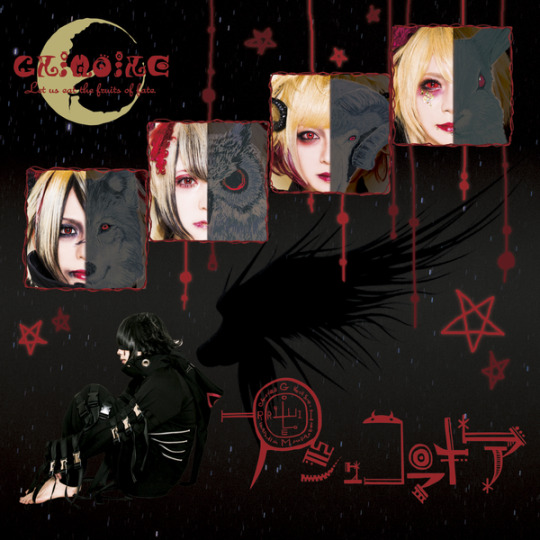
TRACKLIST
Ohayou superbia (Good morning superbia)
Gloomy Gloomy
Jihito jihito (Casualty casualty)
Belphe to yuutsu (Belphe and depression)
Avaritiality
Gray no shokutaku (Gray table)
Last Pray
The Thirteen - Urge (25.04.2018) [★★★★★]
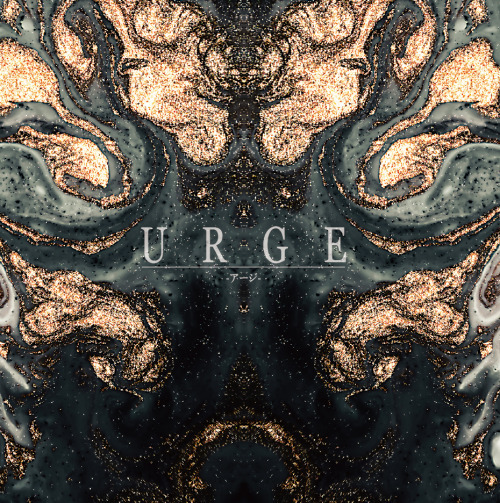
TRACKLIST
Urge to live, urge to die
Aria
THE DIM LIGHT OF DUSK
Avenge the Hatred
Mellow
Harushion (Halcyon)
Wagakki Band - Otonoe (25.04.2018) [★★★★★]
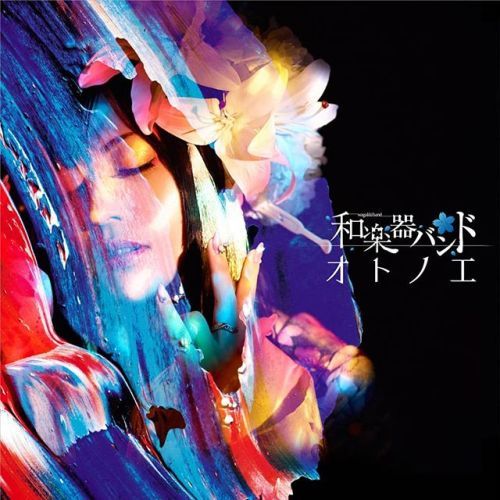
TRACKLIST
Sasameyuki (Thin snow)
Hakanaku mo utsukushi no wa (It’s fairly beautiful)
Yukikage boushi (Snow silhouette)
Kimi ga inai machi (The town where you are)
World Domination
Doppo (Trip)
Shizumanai taiyou (Solar sun)
Paradigm Shift
Kaze tachi nu (Windless)
Guren (Red lotus)
Sabaku no komori uta (Desert lullaby)
Tenjou no kanata (Beyond the Heaven)
Scapegoat - Shokuzai no yagi [Scape goat] (25.04.2018) [★★★★]
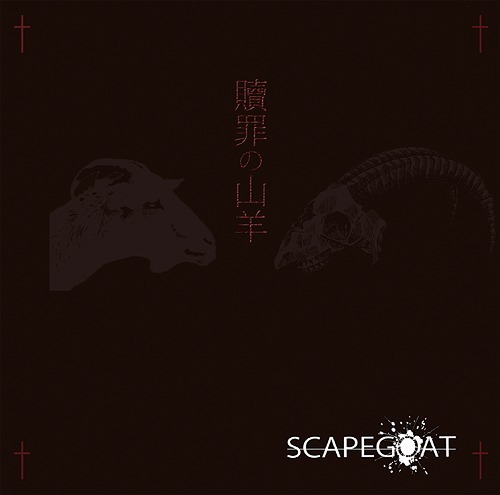
TRACKLIST
Kimi wo koroshite boku mo shinu (uso) (You kill and I will die too (lie))
Konsui (Coma)
Psycho na bansan (Psycho banquet)
Ryuusei (Meteor)
Evergreen
Gothic Nightmare
mad day’Sick rain
Kyozetsu (Rejection)
Kimi no “shinzou” ni koi shiteru (I fall in love with your “heart”)
Deletion noise
Scar-let
Meisou Twilight -re-recording- (Stray twilight)
Akai Bathroom (Red bathroom)
Kokuhaku_Tokidoki, ame (Confession_sometimes, rain)
Haruka, monokuro (Distance, monochrome)
Fate Gear - 7 Years Ago (11.04.2018) [★★★★]

TRACKLIST
Prelude of Earth
7 Years Ago
Shinsou (Truth)
Heart’s Grave
Chained-Destiny
Arashine (Storm sound)
Little Spring
Fenixx 2011
7 Years Ago -Refrain-
-HONORABLE MENTIONS-
Mary’s Blood - Revenant (18.04.2018)
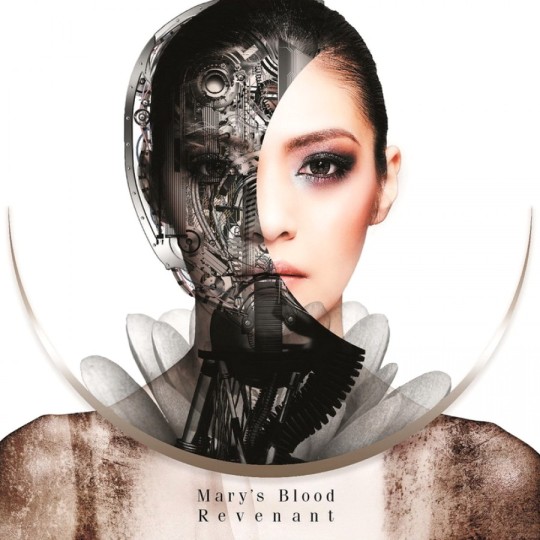
TRACKLIST
World’s End
Tsukiyomi
It’s Alright
Believe me
On the Rocks
Rolling Start
Halcyon Days
Megami no sabaki -Death Queen’s March- (Goddess’ judgement -Death queen’s march-)
R.I.P.
Say Love
Take a Chance
Hatenkohro - Ushiwaka (03.04.2018)

TRACKLIST
Prologue of Ushiwaka
Morning Star
Katana
Raimei (Thunder)
Da (It is)
Ume wa saitaka (Is not nice?)
Kenkon itteki (Back to school)
Over the Bridge
Kamimai
Kumadori
Ushiwaka
Sick. - Sick of you (25.04.2018)

TRACKLIST
Resonance.
Misery. -retake ver.-
Kagerou to bokura. (Ephemeral and me.)
Colors.
Song for you.
Voice. -full orchestra ver.-
TO BE CONTINUED...
#grimoire#the thirteen#wagakki band#scapegoat#fate gear#mary's blood#hatenkohro#sick.#jrock#visual kei#metal#folk#album selection
2 notes
·
View notes
Video
Hina Matsuri! "The Doll Festival Day :D" by Maiko Toshimomo
Via Flickr:
Hina Matsuri also known in English as the doll festival as you can see this is the day when ceramic dolls are placed out there are many reasons for this holiday and many interesting traditions done for it. For us we got to use the Ichiriki-ta ochaya to do a celebration of the holiday performing for are honoured guests this being another joint event with Hanafusa and Komayaka okiya's :D The dances done are the normal for this time of year, Ume wa Saitaka and Gosho no Oniwa. Ume wa Saitaka being done by Maiko Kikushino-neesan and Maiko Kikuyae-chan and Geiko Kikutsuru-neesan as Jikata (musician). I feel bad that i was not able to get photos of myself and Toshiryuu-neesan doing Gosho no Oniwa since i was so busy but it was a amazing and rather fun event all the same. Ookini san dosu for looking at my pictures
0 notes
Video
youtube
(桃山晴衣の端唄/梅は咲いたか Harue Momoyama/Ume wa saitaka - YouTubeから)
0 notes
Link
Japanese Music - I am a classical voice student preparing a set of songs for a recital in April. I was suddenly interested in Japanese culture and decided to do a set of old folk songs arranged by Koscak Yamada. The issue is finding any information or original recordings of these songs is very difficult. Probably because I can't search with Japanese characters (because I don't speak Japanese.) Can someone help me??????The songs are: Ume wa saitaka (Flower Song) Oki No Kamome Ni (Fisherman's Song) Komori-Uta (Cradle Song)ANY INFO/RECORDINGS/HISTORY ON THESE SONGS/ JAPANESE FOLK MUSIC WOULD BE SO HELPFUL!Thank you!!!
0 notes
Note
What would be considered to be the “easiest” maiko dances and the first ones that they learn? ^^
The first ones that they have to learn include simple seasonal dances like Natsu Wa Hotaru, Kagami Mochi, Hagi Kikyo, and Ume Wa Saitaka. The all season dances that they must also know include staple dances, such as Gion Kouta and Kyo No Shiki, along with Rokudan Kuzushi for Gion Kobu maiko ^^
12 notes
·
View notes
Text
The Twelve Days Of Fun - 2018/2019 Edition
For a quick guide to what made it this year look no further!
Day One: Spotlight - Special Tribute - Onihide-san
Day Two: Kanzashi of The Month: December - Maneki and Mochibana
Day Three: What’s In a Pocchiri? Part 1
Day Four: What’s In a Name? Part 20 - Yu (柚), Kyō (杏), and Momo (桃)
Day Five: A Random PSA About The People Who Actually Run Things - Part 4 - The Onesan
Day Six: What’s In a Motif? Part 7 - Water
Day Seven: The Karyūkai Summary of 2018
Day Eight: What’s In a Dance? Part 14 - Ume Wa Saitaka (梅は咲いたか) - Did The Plum Blossoms Bloom?
Day Nine: Kanzashi of The Month: January - 2019′s Design
Day Ten: A Random PSA On New Year’s Activities In The Karyūkai
Day Eleven: Kanzashi of The Month: Forgotten Motifs
Day Twelve: What’s That Thing? Part 20 - Misedashi Statistics
Bonus Day: What’s In a Book? Part 28 - The Kyoto Gokagai by Hiroshi Mizobuchi
14 notes
·
View notes
Note
Oh my word that video of tomitsuyu dancing ume wa saitaka is absolutely beautiful !!! I will admit I really don't know much about Nihon buyo but to me she appears to have such a refined elegance and grace when dancing. I also watched her dancing kurokami recently too and was absolutely taken aback with her performance of the dance. Sorry to drag this on but I was just wondering if you had any thoughts on her as a dancer?? If she's seen as quite talented within the fujima school etc. Thankyou !!
I think that she’s a very competent dancer who is incredibly expressive in her dance. The way that she expresses emotions really brings you in and I think that’s why her dancing is so special ^^
11 notes
·
View notes
Note
In your video of Kosen dancing ume wa saitaka /watch?v=x7nu2L60I_M Miyosako plays for Kosen to dance. I saw her playing for Gion Kobu girls, but don't remember the name of the videos to list here.
There aren’t exactly concrete rules when it comes to who performs where. It’s actually far more common than you may think for maiko and geiko to entertain in other kagai. It’s possible that this party needed a jikata geiko and none were available in Miyagawa Cho, or Kosen was invited to dance in Pontocho ^^
7 notes
·
View notes
Note
Hi Miss Myloko! A couple of questions. I read through your most recent dance/song analysis on Ume wa Saitaka and enjoyed it. In the videos you linked to, some of the patrons seem to be singing along. Is it a well-known song amongst Japanese people? Or is it common for customers to sing along at ozashiki? Also, I did watch the recent Daimonji documentary but unfortunately, my Japanese is poor. Does it shed any light on why Katsuna decided to become a jikata geiko? (conversation happens at 38:04)
The first line of Ume Wa Satitaka is pretty iconic, so almost anyone involved with the karyukai knows the words. Outside of the karyukai it’s a bit more obscure, so I don’t think that many people would know it there. As for the documentary, she kinda avoids the direct answer, instead stating that she wants to change roles ^^;
6 notes
·
View notes
Note
Hello MissLoko, Will you be doing another dance feature anytime soon? Since Spring is slowly coming up, could you please do one on Ume wa Saitaka or Ume ni mo Haru perhaps?
I’ve actually been slowly chipping away at what is easily the longest song in the repertoire (Jūnitsuki), but I can definitely do a shorter one in the mean time ^^
5 notes
·
View notes
Note
Hi! Which dances are for which month/ season? What are the winter dances? Is Momiji no Hashi danced in September? If not, then is it Natsu wa Hotaru?
Dances can be classified by the following:All SeasonsGion KoutaKyō No ShikiRokudan KuzushiManzaiMatsu ZukushiKimi No ŌgiKurokamiUji ChaSpringNanohaHanagasaHarusameSummerNatsu Wa HotaruHagi KikyōAutumnMomiji No HashiWinterUme Wa SaitakaKagami MochiGosho No OniwaSince Momiji No Hashi isn’t danced until autumn it isn’t danced until the end of September. Natsu Wa Hotaru, which is danced in summer, can be danced from the end of June to mid September.
11 notes
·
View notes
Note
Ume wa Saitaka is "Did the plums bloom?" The first line is "did the plums bloom? Still no cherry blossoms" the plum/sakura/willow trio in the song are metaphors for geisha. I didn't listen to see if the Kyôto lyrics are different but info on the song is available at the worldfolksong website
When I was translating it I was having difficulty when it came to whether it was asking a question or not as one source said "yes" and another said "no" so I kept it on neutral ground. In the Kyoto version I didn't hear about yanagi, but the Tokyo version mentioned it and, yes, I got the references to the various flowers ^^;
6 notes
·
View notes